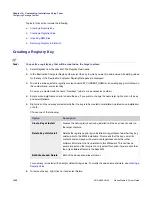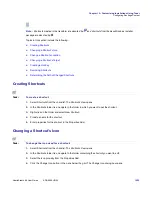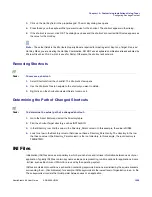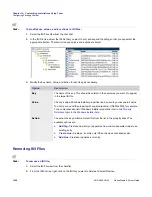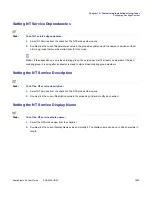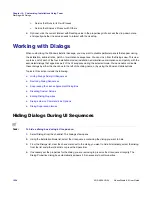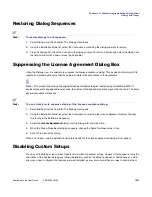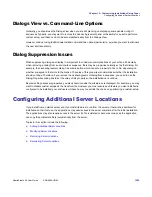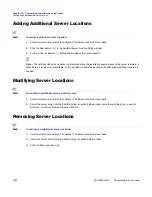
Chapter 12: Customizing Installations Using Tuner
Configuring Package Content
AdminStudio 9.5 User Guide
ADS-0950-UG00
1025
3.
Click on the Hot Key field in the properties grid. The Hot Key dialog box opens.
4.
Press the keys on the keyboard that you want to use for the shortcut. The shortcut appears in the dialog.
5.
If the shortcut is correct, click OK. The dialog box closes and the shortcut’s converted ASCII value appears as
the value for the Hot Key.
Note •
These four fields in the Shortcuts Property Box are required for creating a Hot Key: Icon, Target, Run, and
Hot Key. When you are creating the Hot Key Combination, DO NOT use a keyboard combination already adopted by
Microsoft (such as Ctrl+V, which is used for Paste). Otherwise, the shortcut will not work.
Removing Shortcuts
Task:
To remove a shortcut:
1.
Select Shortcuts from the checklist. The Shortcuts View opens.
2.
Use the Shortcuts Tree to navigate to the shortcut you want to delete.
3.
Right-click on the shortcut and select Delete to remove it.
Determining the Path of Changed Shortcuts
Task:
To determine the actual path of a changed shortcut:
1.
Go to the Direct Editor and select the Directory table.
2.
Find the shortcut Target directory, such as INSTALLDIR.
3.
In that Directory row, find the value in the Directory_Parent column. In this example, the value is DIR26.
4.
Look for a row in the Directory column that does not have a Directory_Parent entry. The directory in the row
that has no value in the Directory_Parent column is the root directory. In this example, the root directory is
TARGETDIR.
INI Files
Initialization (INI) files serve as a repository in which you can store and retrieve information between uses of your
application. Typically INI Files contain key name-value pairs representing run-time options for applications. Some
.ini files, such as Boot.ini and Wininit.ini, are used by the operating system.
INI files are divided into sections, each section containing keywords. Sections are divided by the square brackets
surrounding them—[SectionName], for example. INI file keywords are the lowest level of organization in an .ini file.
These keywords store data that must persist between uses of an application.
Summary of Contents for ADMINSTUDIO 9.5
Page 1: ...AdminStudio 9 5 User Guide Version 9 5...
Page 50: ...Contents 50 ADS 0950 UG00 AdminStudio 9 5 User Guide...
Page 52: ...52 ADS 0950 UG00 AdminStudio 9 5 User Guide...
Page 156: ...156 ADS 0950 UG00 AdminStudio 9 5 User Guide...
Page 440: ...440 ADS 0950 UG00 AdminStudio 9 5 User Guide...
Page 1090: ...1090 ADS 0950 UG00 AdminStudio 9 5 User Guide...
Page 1426: ...1426 ADS 0950 UG00 AdminStudio 9 5 User Guide...
Page 1686: ...1686 ADS 0950 UG00 AdminStudio 9 5 User Guide...
Page 1794: ...Chapter 24 AdminStudio Public API Reference 1794 ADS 0950 UG00 AdminStudio 9 5 User Guide...
Page 1842: ...Index 1842 ADS 0950 UG00 AdminStudio 9 5 User Guide...










